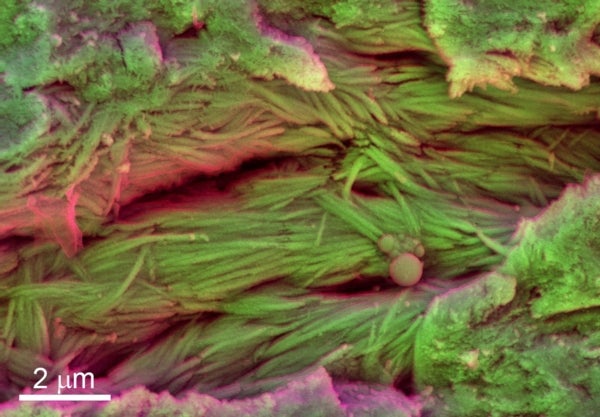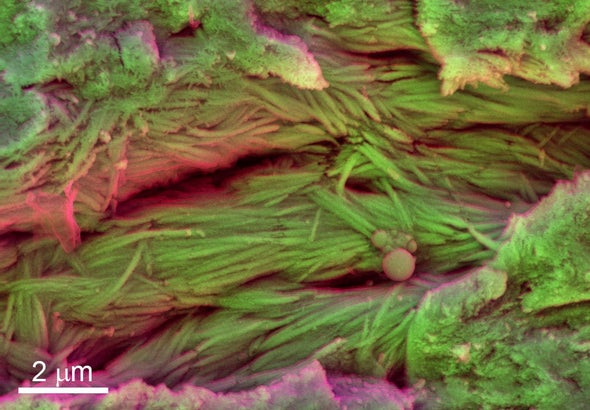

During the process of fossilization, all organic compounds–such as those that make up cells and tissues—disappear, leaving behind remains composed strictly of mineral. That’s the conventional wisdom, anyway. But discoveries made over the past two decades have steadily chipped away at this tenet of paleontology, revealing what appear to be blood cells, bone cells and other organic materials in a handful of exceptionally well-preserved dinosaur fossils. Now new findings suggest that such organic preservation may actually be relatively common. Sergio Bertazzo of University College London and his colleagues analyzed eight dinosaur specimens that did not show any external signs of being particularly well preserved, and found apparent blood cells and collagen fibers in six of them. The remains are some 75 million years old. The researchers describe their findings in a report published in the June 9 Nature Communications. (Scientific American is part of Nature Publishing Group.)